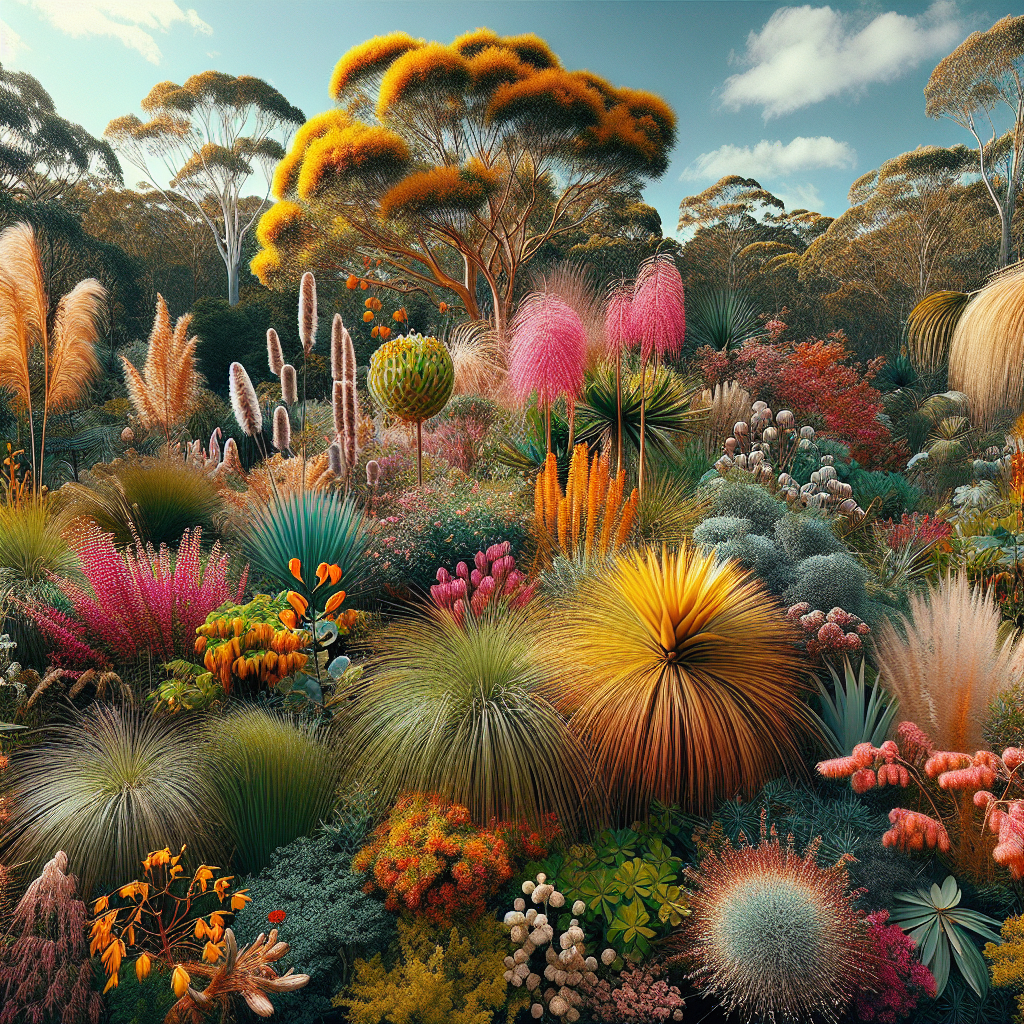Exploring the Diversity of Australian Flora
Australia, a land of stark contrasts and breathtaking landscapes, is also home to an incredibly diverse array of native plants. The flora of Australia encompasses a variety of ecosystems, from the lush rainforests of the northeast to the arid deserts of the interior and the vibrant coastlines. Understanding and appreciating this rich biodiversity is key to conserving it for future generations.
In this article, we will delve into the unique characteristics of Australian flowers and plants, the trends in Australian flora, and the importance of these native species to the Australian environment and cultural heritage.
The Uniqueness of Australian Flora
The flora of Australia is not only diverse but also highly unique. An estimated 80% of the flowering plants, 84% of the mammals, more than 45% of the birds, and 89% of in-shore, temperate-zone fish are endemic—meaning they are found nowhere else in the world. This high level of endemism can be attributed to the continent’s long geographic isolation, diverse habitats, and the effects of an unpredictable climate.
Evolution and Adaptation
Australia’s flora has evolved over millions of years, adapting to an environment that is often harsh and dry. The continent’s isolation has led to the development of unique plant species that have adapted to the local conditions. For example, many Australian plants are adapted to survive in nutrient-poor soils and have developed symbiotic relationships with soil fungi, known as mycorrhiza, to aid in the absorption of nutrients.
Distinctive Features
Australian native plants possess certain distinctive features that set them apart from plants in other parts of the world. Many have hard, leathery leaves as a defense against drought and intense sunlight. Some species, like the eucalyptus, have oil-rich foliage that can withstand fire, an adaptation to the frequent bushfires that occur in many parts of Australia.
Iconic Australian Flowers and Plants
Australia boasts a rich tapestry of plants, each with its own charm and significance. Let’s explore some of the most iconic Australian flowers and plants that captivate botanists and nature enthusiasts alike.
Eucalyptus
Eucalyptus, also known as gum trees, are perhaps the most well-known of Australia’s flora. These tall, evergreen trees are a defining feature of the Australian landscape. There are more than 700 species of eucalyptus, and they play a crucial role in the ecosystem, providing habitat and food for a myriad of wildlife.
Waratah
The Waratah is the floral emblem of New South Wales and is revered for its striking, large red flowers that bloom in spring. Its nectar-rich blossoms are a vital food source for birds and insects.
Kangaroo Paw
The Kangaroo Paw, with its unique, fuzzy flowers that resemble the paws of a kangaroo, is another distinctive Australian plant. It comes in a range of colors from red and green to yellow and is popular in gardens for its bird-attracting qualities.
Australian Flora Trends
In recent years, there has been a growing appreciation for native Australian plants in gardening and landscaping. Here are some trends that are shaping the use of Australian flora:
Embracing Native Gardens
More Australians are moving away from traditional European-style gardens in favor of native landscapes. These gardens require less water and maintenance and are better suited to the Australian climate. They also support local wildlife, creating a haven for birds, insects, and other fauna.
Sustainability and Conservation
The trend towards native gardening is also part of a larger movement towards sustainability and conservation. By choosing native plants, gardeners are helping to preserve Australia’s unique flora and the wildlife that depends on it.
Indigenous Plant Use
There is also a growing interest in the traditional uses of plants by Indigenous Australians for food, medicine, and tools. This knowledge is being incorporated into educational programs and botanical gardens, fostering a deeper understanding and respect for the cultural significance of Australian flora.
Conservation Efforts
The conservation of Australian flora is vital. Many native plants are threatened by habitat loss, invasive species, and climate change. Efforts to conserve and protect Australian plants include:
Seed Banks and Botanic Gardens
Seed banks play a crucial role in conserving the genetic diversity of native plants. The Australian PlantBank, for example, is a major seed bank specializing in native plant conservation. Botanic gardens across the country also work to preserve species and educate the public about Australia’s native flora.
Rehabilitation and Restoration Projects
Rehabilitation and restoration projects aim to restore native habitats that have been degraded. These projects often involve the replanting of native species and the removal of invasive plants.
Legislation and Policies
The Australian government has implemented various laws and policies to protect endangered species and habitats. The Environment Protection and Biodiversity Conservation Act 1999 is a key piece of legislation that provides a framework for the protection of Australian flora and fauna.
Conclusion
The diversity of Australian flora is a national treasure that reflects the continent’s unique history and landscape. From the iconic eucalyptus and the vibrant Waratah to the quirky Kangaroo Paw, these native plants are an integral part of Australia’s identity.
As we embrace more sustainable gardening practices and conservation efforts, we contribute to the protection of this remarkable diversity. By exploring and appreciating the beauty and ecological importance of Australian flowers and plants, we ensure that they continue to thrive for generations to come.










